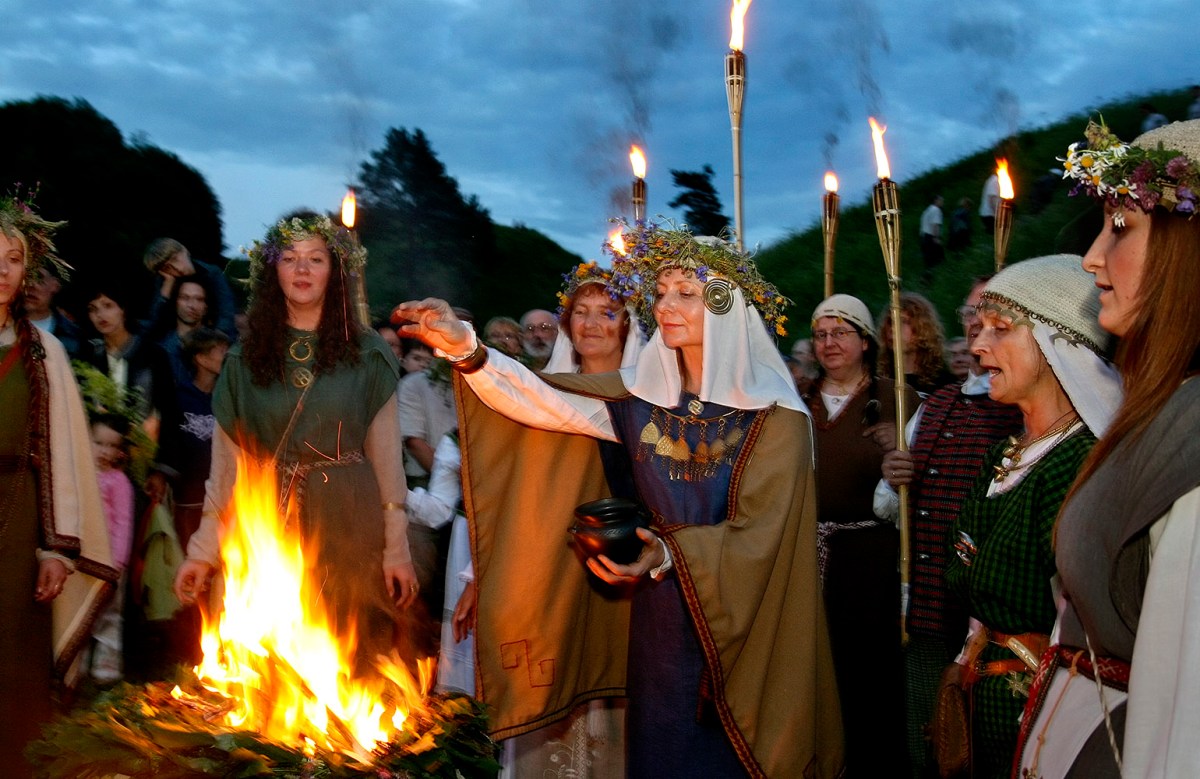
Romuva is an ancient Baltic religion that has survived through centuries of change. But what makes it so intriguing? Romuva is not just a set of beliefs; it's a way of life deeply connected to nature, traditions, and community. Originating from the Baltic region, this faith emphasizes harmony with the natural world, reverence for ancestors, and the celebration of seasonal cycles. Unlike many modern religions, Romuva has no central holy book or single deity. Instead, it honors a pantheon of gods and spirits, each representing different aspects of life and nature. Curious about how this ancient faith has adapted to modern times? Let's dive into 29 fascinating facts about Romuva that will give you a deeper understanding of this enduring tradition.
What is Romuva?
Romuva is an ancient Baltic pagan religion that has seen a revival in modern times. It centers around nature worship, ancestral veneration, and a deep connection to the land. Here are some fascinating facts about Romuva:
-
Romuva is one of the oldest known religions in Europe, dating back to pre-Christian times.
-
The name "Romuva" comes from an old Prussian word meaning "temple" or "sanctuary."
-
This religion primarily thrived in the regions of modern-day Lithuania, Latvia, and parts of Poland.
-
Romuva followers worship a pantheon of deities, with Perk?nas, the god of thunder, being one of the most significant.
Beliefs and Practices
Romuva's beliefs and practices are deeply rooted in nature and the cycles of life. They emphasize harmony with the environment and respect for all living things.
-
Nature worship is central to Romuva, with sacred groves and natural sites playing a key role in rituals.
-
Ancestor veneration is another crucial aspect, with rituals performed to honor and remember the deceased.
-
Fire rituals are common, symbolizing purification and the connection between the earthly and divine realms.
-
Seasonal festivals mark important times of the year, such as the summer solstice and harvest time.
Deities and Mythology
Romuva's rich mythology includes a variety of gods and goddesses, each with their own unique attributes and stories.
-
Perk?nas, the thunder god, is often depicted wielding an axe or hammer, symbolizing his power over storms.
-
Laima, the goddess of fate, is believed to control the destiny of individuals from birth to death.
-
Žemyna, the earth goddess, represents fertility and the nurturing aspects of nature.
-
Saule, the sun goddess, is celebrated for bringing light and warmth to the world.
Modern Revival
Romuva experienced a resurgence in the 20th century, with efforts to revive and preserve its ancient traditions.
-
The modern Romuva movement began in the 1960s, led by Lithuanian ethnologist Jonas Trink?nas.
-
Romuva was officially recognized as a religion in Lithuania in 1992.
-
Today, there are Romuva communities not only in Lithuania but also in other countries with Baltic diaspora.
-
Modern Romuva followers often blend ancient practices with contemporary lifestyles, creating a unique fusion of old and new.
Rituals and Celebrations
Romuva rituals and celebrations are vibrant and community-oriented, often involving music, dance, and traditional costumes.
-
The summer solstice, known as Rasos, is one of the most important festivals, celebrating the longest day of the year.
-
K??ios, the winter solstice celebration, involves a special meal with symbolic foods and rituals to honor ancestors.
-
V?lin?s, the festival of the dead, is a time to visit graves and light candles in memory of the departed.
-
Traditional songs and dances, known as dainos and rateliai, are integral to Romuva celebrations.
Symbols and Artifacts
Romuva uses various symbols and artifacts in its rituals, each carrying deep spiritual significance.
-
The oak tree is a sacred symbol, representing strength, endurance, and connection to the divine.
-
R?pintoj?lis, a traditional wooden carving of a pensive figure, symbolizes contemplation and spiritual reflection.
-
The sun cross, a symbol combining a cross and a circle, represents the unity of earth and sky.
-
Traditional clothing, often adorned with intricate patterns and symbols, is worn during rituals and festivals.
Community and Social Structure
Romuva communities are typically close-knit, with a strong emphasis on mutual support and shared values.
-
Elders play a significant role, guiding the community and preserving traditional knowledge.
-
Community gatherings, known as samb?riai, provide opportunities for socializing, sharing stories, and performing rituals.
-
Romuva places a high value on hospitality, with guests often treated as sacred and honored.
-
Education and the transmission of cultural heritage are important, with efforts to teach younger generations about Romuva traditions.
Challenges and Future Prospects
Despite its rich history and cultural significance, Romuva faces challenges in the modern world.
- The religion has faced opposition and misunderstanding, particularly from dominant religious groups.
Romuva's Lasting Legacy
Romuva's rich history and traditions offer a fascinating glimpse into ancient Baltic culture. Its mythology, rituals, and festivals continue to captivate those interested in pagan religions. Despite facing challenges over centuries, Romuva has managed to preserve its unique identity and practices. Today, it stands as a testament to the resilience and enduring spirit of the Baltic people.
Modern followers of Romuva work tirelessly to keep these traditions alive, ensuring that future generations can appreciate and learn from this ancient faith. Whether you're a history buff, a spiritual seeker, or just curious, Romuva provides a wealth of knowledge and inspiration. So next time you think about ancient religions, remember Romuva's enduring legacy and the rich cultural heritage it represents.
Was this page helpful?
Our commitment to delivering trustworthy and engaging content is at the heart of what we do. Each fact on our site is contributed by real users like you, bringing a wealth of diverse insights and information. To ensure the highest standards of accuracy and reliability, our dedicated editors meticulously review each submission. This process guarantees that the facts we share are not only fascinating but also credible. Trust in our commitment to quality and authenticity as you explore and learn with us.


